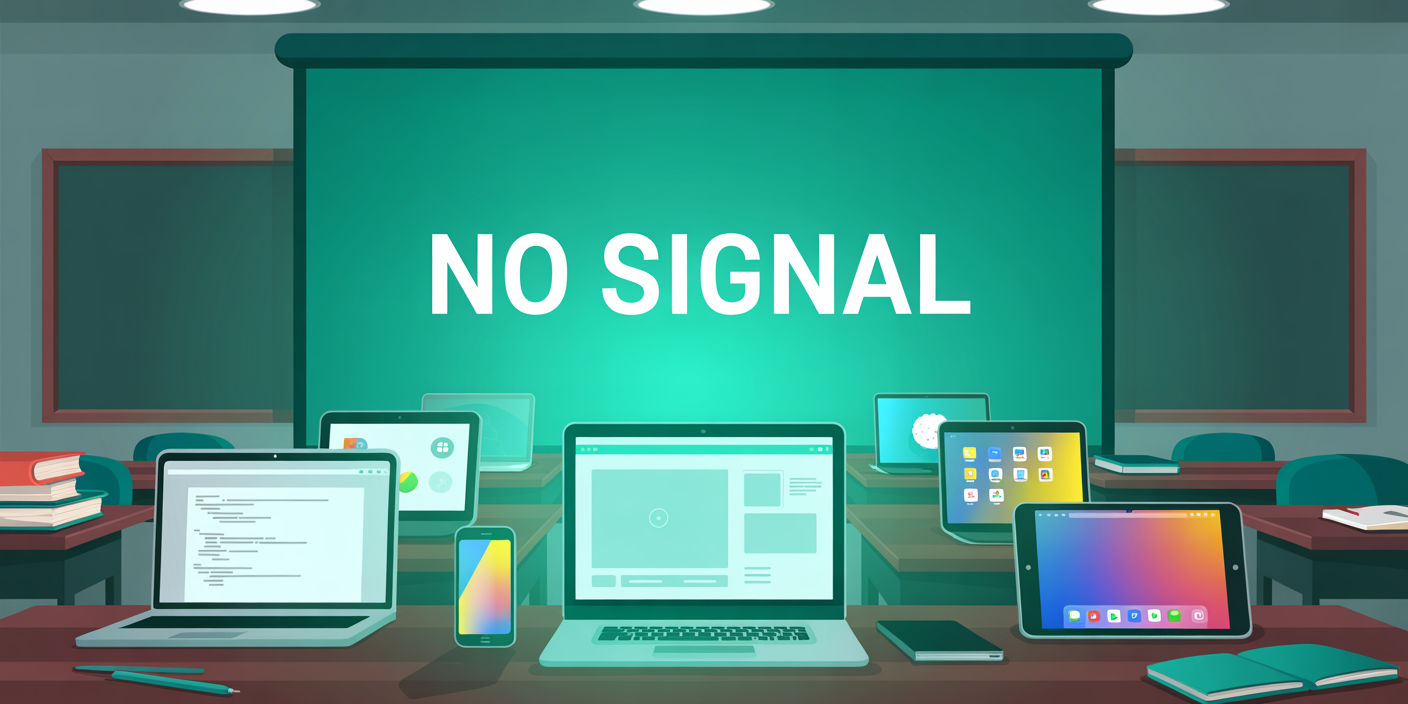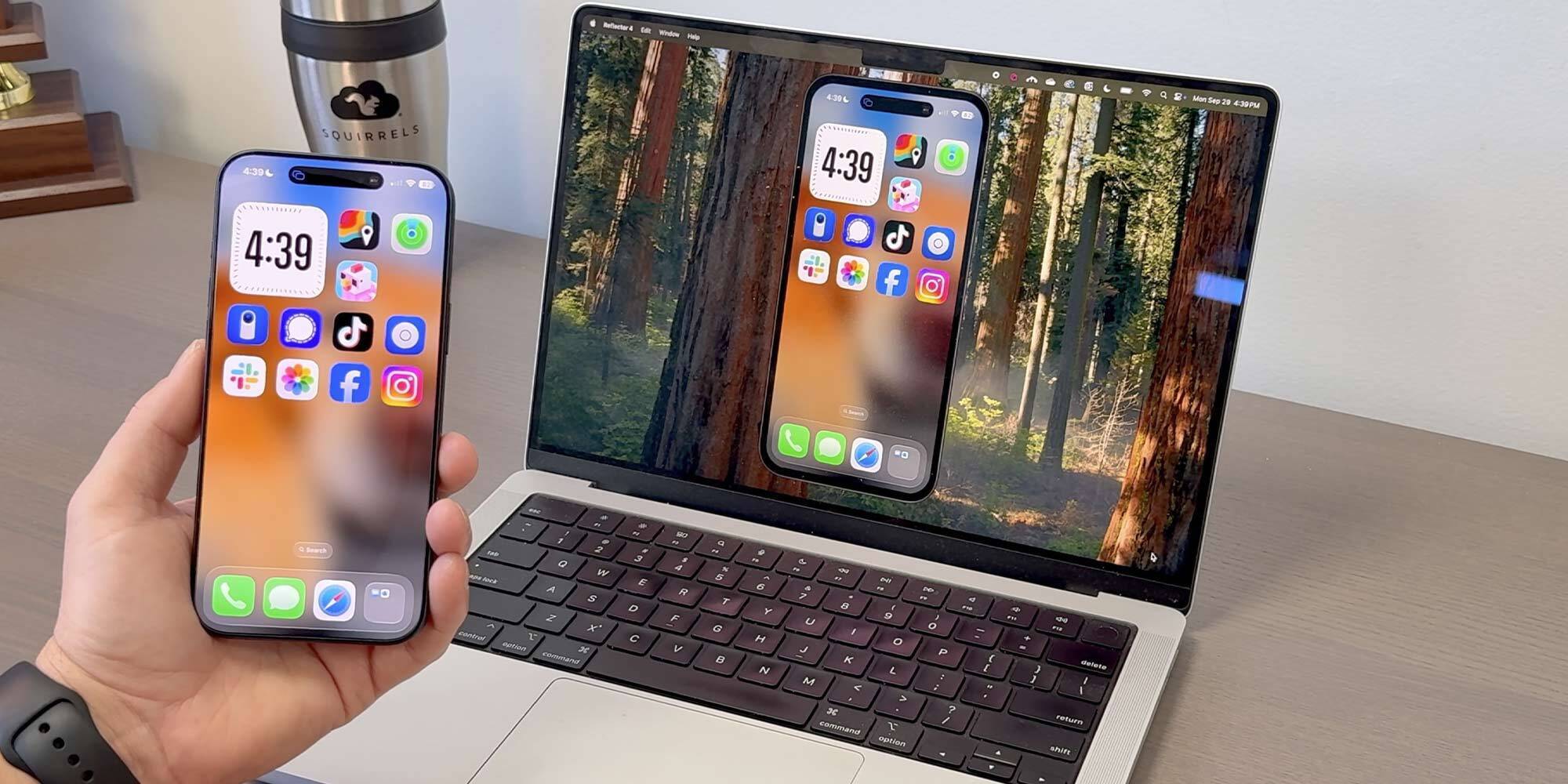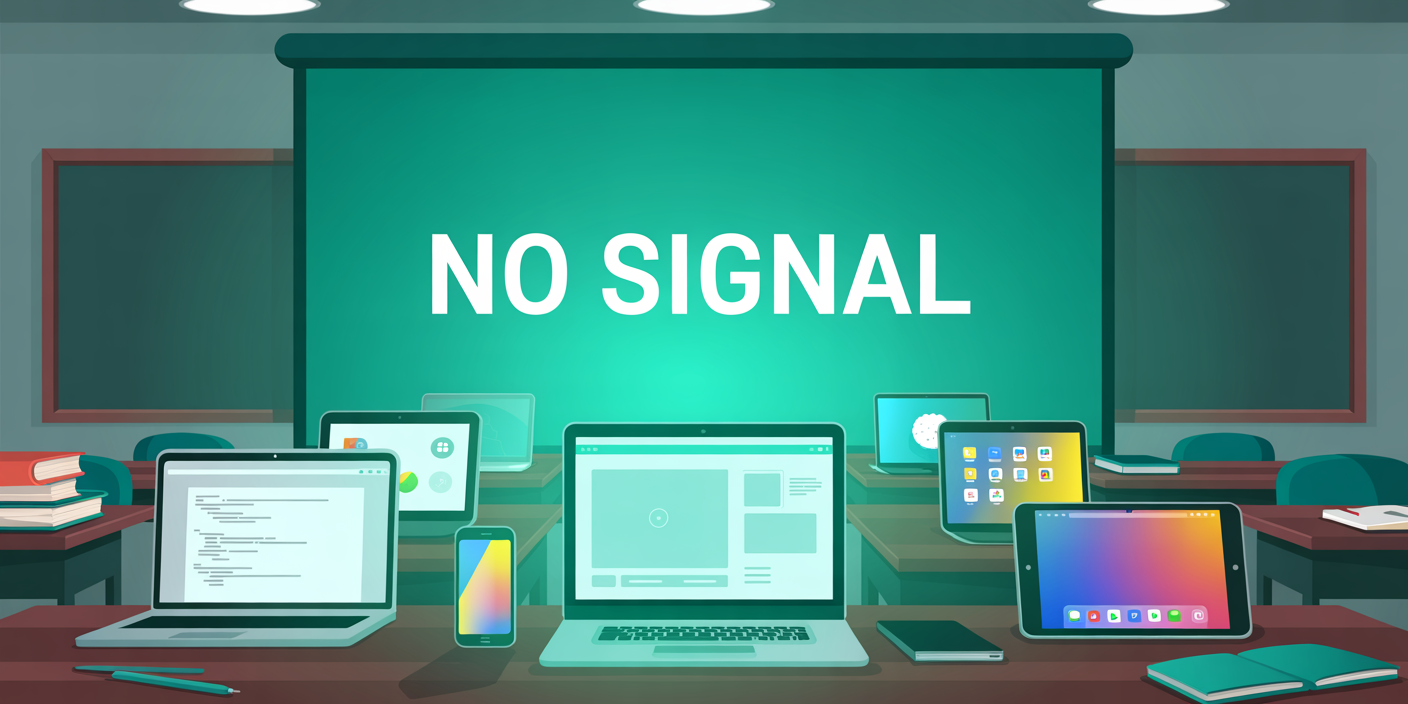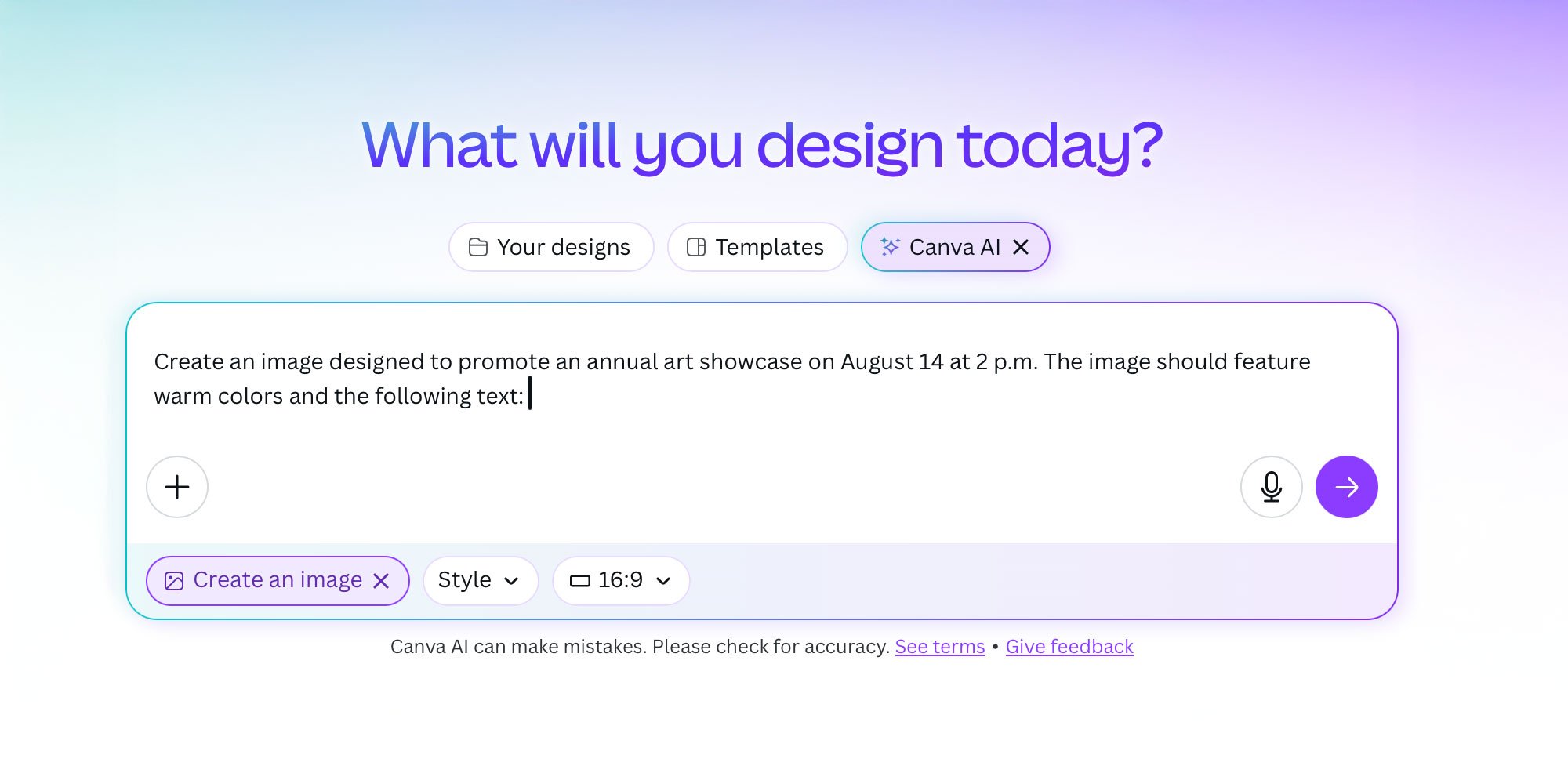How to Screen Mirror iPhone 17
iPhone 17 makes screen sharing and media streaming fast and easy. This guide shows you how to wirelessly mirror iPhone 17 to TVs, projectors or...
2 min read
Squirrels Aug 5, 2025 11:52:48 AM
HDMI cables. Document cameras. DVD players. Dongles and adapters.
Many classrooms still rely on these old technologies, but students and educators expect more.

Classroom audiovisual (AV) tech from 20-plus years ago doesn't work with today’s workflows.
It was built for old-school lectures without engagement, interaction and collaboration. Students were expected to listen and not participate. Classroom tech too often remains stuck in the past while learning styles and teaching methods have moved forward.
Faculty and students now bring laptops, phones, tablets and Chromebooks to class. Content is created in browsers and saved to the cloud. Thumb drives and desktop folders simply aren't a thing anymore.
In too many classrooms, AV tech still involves:
Calling IT to help connect student devices
Giving up and emailing presentation slides to someone else
Switching inputs three times before anything shows up on the screen
Printing out laminated "how to share" instructional sheets that inevitably get lost
That’s not a tech problem. That’s a user-experience problem, and it’s costing you more than you think.
There's almost always a screen within viewing distance of students and faculty in educational spaces. It's the main feature of any room. People use these screens constantly, and they expect to know how to use them instinctively.
So when they walk into a classroom and can’t share their screen without asking for help or hunting for an adapter, it breaks that expectation. It’s frustrating. The more comfortable people are with screens, the less patient they are when one doesn’t work.
Faculty shouldn’t need a cheat sheet to teach. Students shouldn’t feel anxiety about presenting. If connecting to a display feels like a puzzle, they’ll eventually stop using it.
That’s when AV goes unused — not always because it’s broken, but because it’s unfamiliar, complicated and lackluster.
Just like all those screens, wireless screen sharing isn’t a new frontier. It’s expected.
Universities and schools aren't leading the curve on this — your users are. They’ve already formed expectations based on how every other screen in their life works. When a classroom doesn’t deliver that experience, it doesn’t feel normal. It feels behind and outdated.
Your faculty members expect it. Your students definitely expect it. Wireless screen sharing is no longer a cutting-edge innovation. It's the new standard.
Let’s reset the baseline for classroom AV tech:
Wireless screen sharing that works across all student, teacher and faculty devices
No adapters or cables
Consistent user experience across all rooms
Admin-level control for IT
Budget-friendly and continually evolving
Bonus: built-in digital signage and emergency alerts
That’s what a modern classroom needs to function. Fortunately, you don't need a luxury AV stack to get there.
Ditto makes this standard easy to reach. It works with the hardware you already have—displays, projectors, whatever’s in the room.
It gives your users one simple, consistent way to share wirelessly, no matter their device, and it removes the confusion that comes from mixing modern users with legacy workflows.
Wireless screen sharing is no longer a nice-to-have. It’s what your users assume you already support.
With Ditto, you can meet and exceed that expectation.
See how Ditto sets the new standard for campus AV →

iPhone 17 makes screen sharing and media streaming fast and easy. This guide shows you how to wirelessly mirror iPhone 17 to TVs, projectors or...

HDMI cables. Document cameras. DVD players. Dongles and adapters. Many classrooms still rely on these old technologies, but students and educators...

Digital signage is getting easier every day thanks to AI-powered design tools and signage management software. This guide helps schools and business...

IT checks in when faculty and students check out. Summer is the best time to modernize classroom tech with zero disruption and maximum return.
![How to Wirelessly Stream a Windows Surface Pro to a Computer or Projector [2021 Update]](https://blog.airsquirrels.com/hubfs/Blog%20Images/B307%20-%20AirParrot%20Surface%20Pro%202019%20Update/Blog-Featured-Image.jpg)
We've all been there before: Whether at home, at work or in a meeting, how many times have you needed to wirelessly share your Windows Surface Pro...
![How to Wirelessly Screen Mirror a Chromebook to Apple TV and Windows [2020 Update]](https://blog.airsquirrels.com/hubfs/Blog%20Images/B317%20-%20Mirror%20Chromebook%20Ditto/Chromebook-Blog.jpg)
Sharing a Chromebook screen to a TV, projector or other large display is easy. You don’t need a Chromecast or confusing hardware to do it. All...


Save when you buy AirParrot and Reflector together. One AirParrot and one Reflector license for use on either MacOS or Windows.
BUY US$

Save when you buy AirParrot and Reflector together. One AirParrot and one Reflector license for use on either MacOS or Windows.
BUY US$